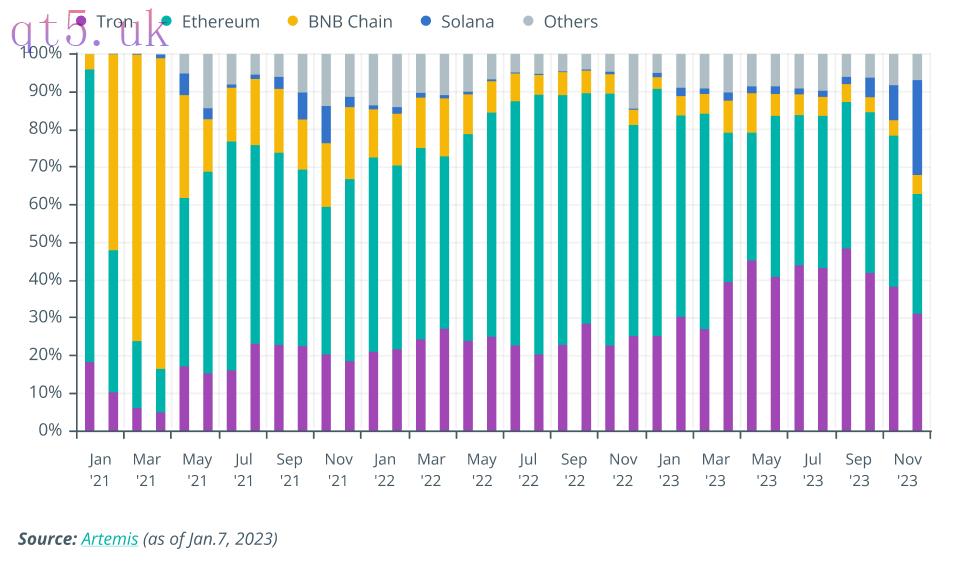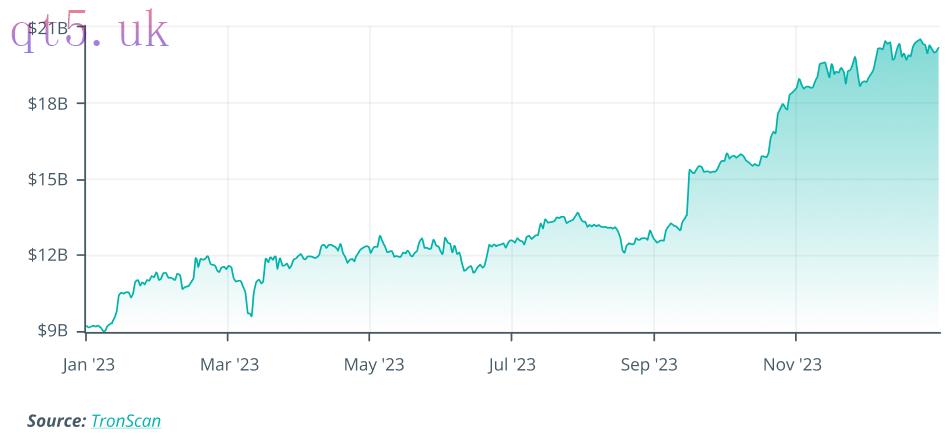Among the myriad of blockchains introduced in the last decade, TRON has effectively catered to the rising demand for stablecoin products and services with its scalable and cost-efficient platform. This capability has garnered attention from leading stablecoin companies, including Tether and Circle, which issue Tether (USDT) and Circle USD (USDC), and has attracted significant interest in retail payment applications.
The latest report from Cointelegraph Research provides extensive analysis and detailed insights into the elements driving TRON’s ascent. This document delves into the key contributors to TRON’s success, covering its innovative technical features (such as the Tron Virtual Machine), its broad ecosystem, the dynamic community of decentralized applications (DApps) it supports, its token economy, the development of its real-world asset (RWA) protocol, and its strategic roadmap for future growth.
Download a full version of the report for free here
The emergence of TRON in crypto payments
For more than ten years, the adoption of blockchain technology has sparked widespread debate, with stablecoins emerging as one of the most effective applications for blockchain-based payment systems. Despite facing scrutiny from both within the blockchain community and beyond, stablecoins have proven to be a practical solution for facilitating cross-border payments.
Tether holds the position of the largest stablecoin issuer with a market capitalization of $93 billion, with over 50% of its issuance on the TRON blockchain. This makes TRON the primary network for USDT circulation, indicating a strong use of dollar-denominated payments within the platform.
Over the past few years, TRON has enhanced its market presence, overtaking the BNB Chain in terms of stablecoin transaction volume in 2021 and representing one-third of the global stablecoin volume by the end of 2023. In the fourth quarter of 2023 alone, transactions on TRON amounted to $1.2 trillion.
 Figure 1: Stablecoin Transaction Volume Across Blockchains
Figure 1: Stablecoin Transaction Volume Across BlockchainsTRON as a real-world asset tokenization platform
TRON has established a notable presence in the tokenization of real-world assets (RWA), hosting the world’s second-largest RWA protocol, stUSDT, which delivers annual yields exceeding 4.51%. StUSDT, or staked USDT, emerges on TRON when users allocate USDT to designated smart contracts. These contracts channel the invested funds into various real-world assets, like government bonds, yielding returns for participants. With over $2.24 billion in assets under management, stUSDT has rapidly ascended the DeFi protocol rankings, now closely trailing MakerDAO, which has a total value locked (TVL) of $2.38 billion. The Cointelegraph Research Report offers more detailed visuals, statistics, and insights into the TRON ecosystem.
 Figure 2. The total value locked on the TRON blockchain in 2023
Figure 2. The total value locked on the TRON blockchain in 2023The Cointelegraph Research team
Cointelegraph’s Research division is staffed by some of the premier minds in the blockchain sector, blending academic thoroughness with the insights gained from practical experience. The team is dedicated to delivering content that is not only accurate but also rich in insight, representing the highest standard of information available in the industry.
With decades of combined experience in traditional finance, business, engineering, technology, and research, the Cointelegraph Research team is perfectly positioned to put its combined talents to proper use with the latest Investor Insights Report.
Download a full version of the report for free here
The opinions expressed in this article are for general informational purposes only. They are not intended to provide specific advice or recommendations for any individual or on any particular security or investment product.




 download
download download
download website
website